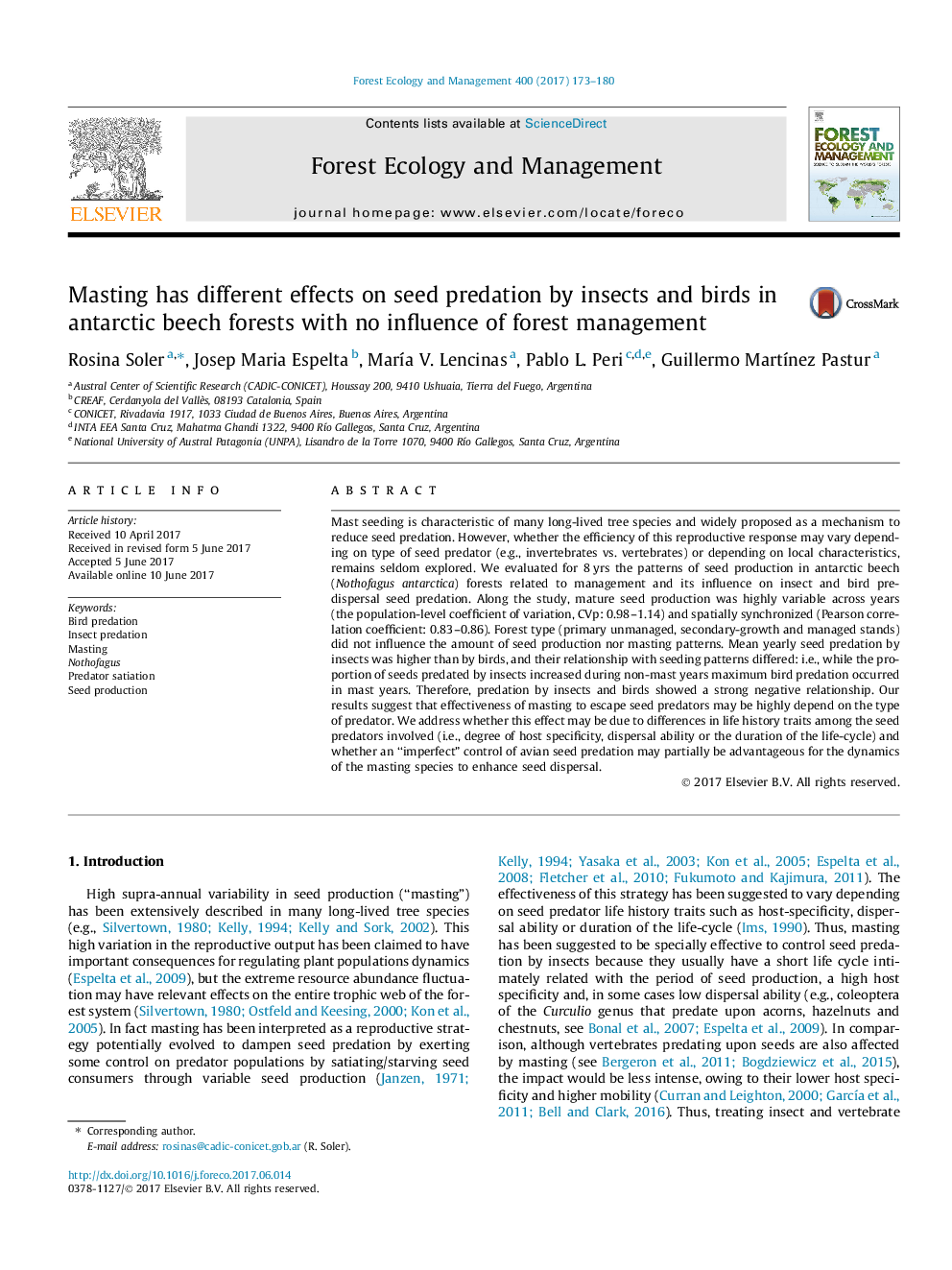| کد مقاله | کد نشریه | سال انتشار | مقاله انگلیسی | نسخه تمام متن |
|---|---|---|---|---|
| 6459223 | 1421358 | 2017 | 8 صفحه PDF | دانلود رایگان |
- Highly-variable seed production, synchrony and imperfect periodicity was found for Nothofagus.
- Fluctuating seed production decreased pre-dispersal insect predation.
- Effectiveness of masting to escape seed predators depend on the type of predator.
- Bird predation was totally unresponsive to seeding pulses.
- Forest management had no effect on inter-annual variability and predation rates.
Mast seeding is characteristic of many long-lived tree species and widely proposed as a mechanism to reduce seed predation. However, whether the efficiency of this reproductive response may vary depending on type of seed predator (e.g., invertebrates vs. vertebrates) or depending on local characteristics, remains seldom explored. We evaluated for 8Â yrs the patterns of seed production in antarctic beech (Nothofagus antarctica) forests related to management and its influence on insect and bird pre-dispersal seed predation. Along the study, mature seed production was highly variable across years (the population-level coefficient of variation, CVp: 0.98-1.14) and spatially synchronized (Pearson correlation coefficient: 0.83-0.86). Forest type (primary unmanaged, secondary-growth and managed stands) did not influence the amount of seed production nor masting patterns. Mean yearly seed predation by insects was higher than by birds, and their relationship with seeding patterns differed: i.e., while the proportion of seeds predated by insects increased during non-mast years maximum bird predation occurred in mast years. Therefore, predation by insects and birds showed a strong negative relationship. Our results suggest that effectiveness of masting to escape seed predators may be highly depend on the type of predator. We address whether this effect may be due to differences in life history traits among the seed predators involved (i.e., degree of host specificity, dispersal ability or the duration of the life-cycle) and whether an “imperfect” control of avian seed predation may partially be advantageous for the dynamics of the masting species to enhance seed dispersal.
Journal: Forest Ecology and Management - Volume 400, 15 September 2017, Pages 173-180
